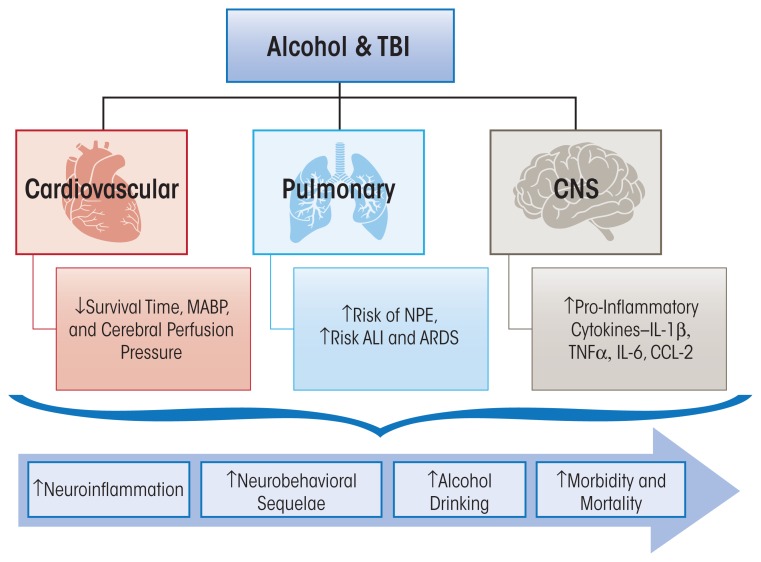Figure 3.
Salient cardiovascular, pulmonary, and central nervous system pathophysiological consequences of alcohol abuse prior to, or at the time of, traumatic brain injury (TBI). The disruption in hemodynamic homeostasis resulting from TBI contributes to decreased cerebral perfusion pressure. The lung is affected through neurogenic mechanisms leading to neuropulmonary edema (NPE) and associated risk for acute lung injury (ALI) and adult respiratory distress syndrome (ARDS). In the brain (CNS), alcohol accentuates neuroinflammation, which is associated with neurobehavioral dysfunction that can potentially promote alcohol drinking. Together, these pathophysiological consequences increase morbidity and mortality from TBI.

